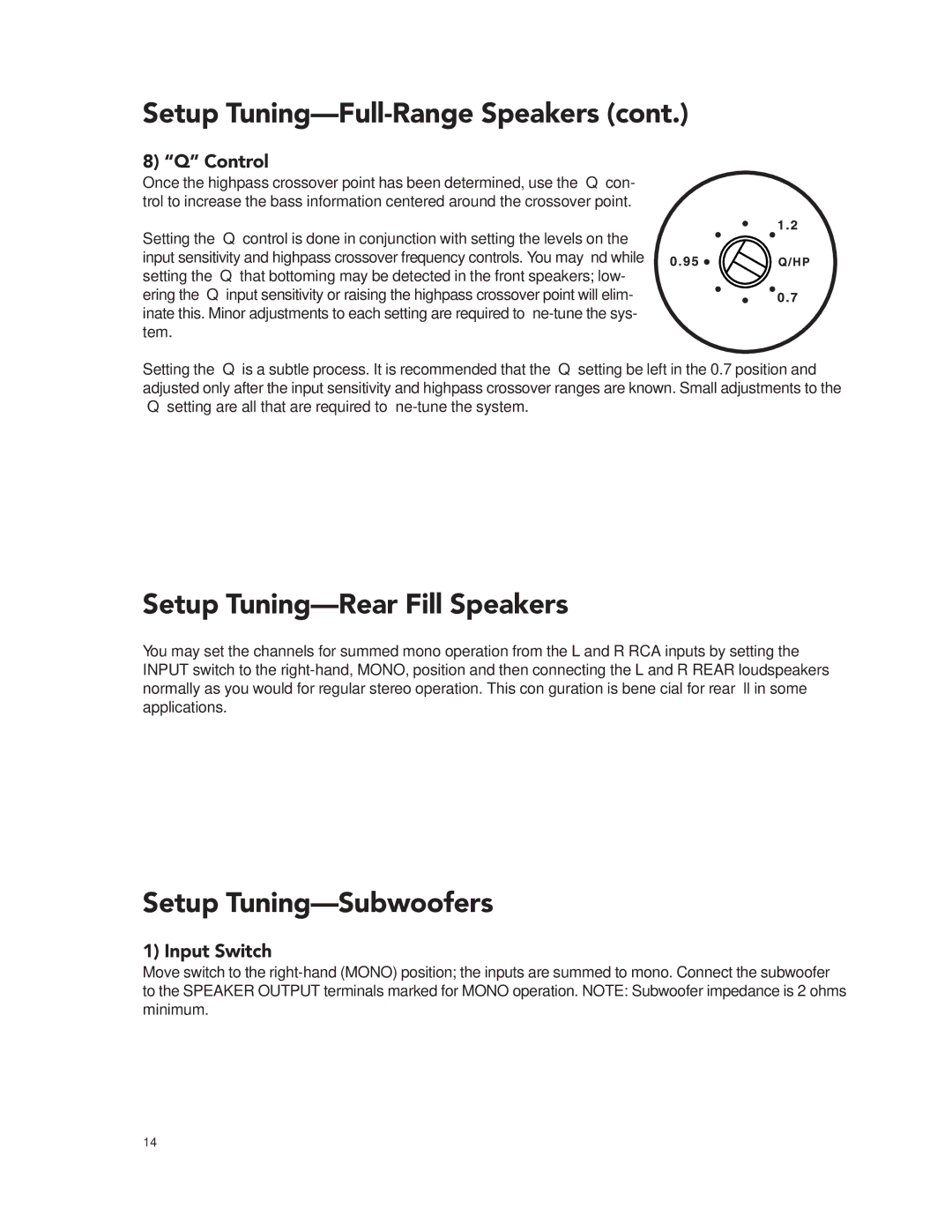
Setup Tuning—Full-Range Speakers (cont.)
8) “Q” Control
Once the highpass crossover point has been determined, use the “Q” con- trol to increase the bass information centered around the crossover point.
Setting the “Q” control is done in conjunction with setting the levels on the input sensitivity and highpass crossover frequency controls. You may find while setting the “Q” that bottoming may be detected in the front speakers; low- ering the “Q” input sensitivity or raising the highpass crossover point will elim- inate this. Minor adjustments to each setting are required to
Setting the “Q” is a subtle process. It is recommended that the “Q” setting be left in the 0.7 position and adjusted only after the input sensitivity and highpass crossover ranges are known. Small adjustments to the “Q” setting are all that are required to
Setup Tuning—Rear Fill Speakers
You may set the channels for summed mono operation from the L and R RCA inputs by setting the INPUT switch to the
Setup Tuning—Subwoofers
1) Input Switch
Move switch to the
14
